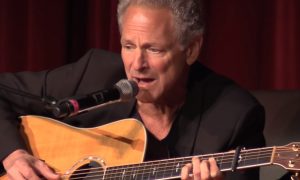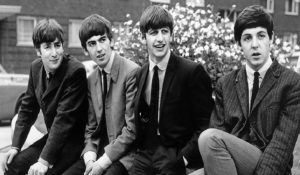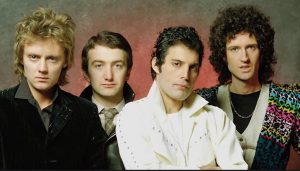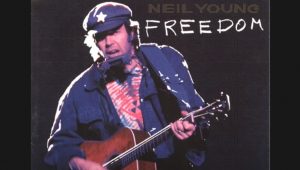20 Greatest Covers and Remakes In The 1960s
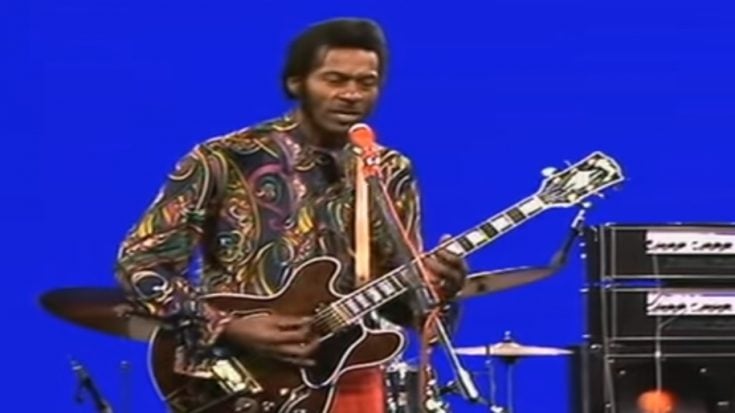
Chuck Berry - mpontvww / Youtube
Cover songs are intricately intertwined with modern music. Since the beginning of composition, artists have always interpreted the works of their contemporaries, and this tradition has been a vital aspect of the musical landscape.
Famous names in traditional pop music, such as Bing Crosby, Billie Holiday, Frank Sinatra, and Louis Armstrong, left lasting impressions by cleverly taking someone else’s song and turning it into an engaging composition all their own. Their ability to breathe fresh energy into pre-existing pieces demonstrated their creative abilities and advanced musical genres.
The most interesting question this musical phenomenon raises is: Which of these musicians took a certain song and made it so legendary and powerful that the original recording artist vanishes from public memory?
Here are some of the greatest remakes ever recorded, and this time we’re covering songs from the 1960s.
20. “Suspicious Minds” by Elvis Presley (1969) | Originally by Mark James (1968)
“Suspicious Minds” was first written and sung by American songwriter Mark James in 1968, however, it was not a commercial hit. After that, the King of Rock and Roll Elvis Presley recorded his version with producer Chips Moman, which shot it to the top of the US Billboard Hot 100.
The song explores the nuances of a dysfunctional and mistrusting relationship, highlighting how crucial it is for the protagonists to resolve their problems in order to keep their relationship together. Mark James also co-wrote “Always on My Mind” (which Presley later recorded).
James revealed that he got the idea for “Suspicious Minds” late at night as he was idly experimenting with his Fender guitar and adding Hammond organ pedals for a bass line. He thought the song that resulted had a very appealing tune. James was married to his first wife during this time, but he still had affections for his boyhood sweetheart, who was at the time married in Houston.
19. “Try A Little Tenderness” by Otis Redding (1966) | Originally by Ray Noble and His Orchestra (1932)
The Ray Noble Orchestra recorded the song “Try a Little Tenderness” on December 8, 1932, with vocals by Val Rosing. The song was written by Jimmy Campbell, Reg Connelly, and Harry M. Woods.
After the Ray Noble Orchestra performed the song, many other performers took notice of it, including Ted Lewis, Ruth Etting, Bing Crosby, Frank Sinatra, Charlie Palloy & his Orchestra, and Charlie Palloy.
Soul singer Otis Redding popularized a whole new rendition in 1966. Redding’s performance begins at a leisurely, soulful tempo and builds to an intense R&B crescendo. The song “Just Squeeze Me (But Please Don’t Tease Me)” by Duke Ellington and Lee Gaines is cleverly included into this version, along with the lyric “sock it to me”.
18. “Turn, Turn, Turn” by The Byrds (1966) | Originally by The Limeliters (1962)
Pete Seeger wrote “Turn! Turn! Turn!” (also known as “To Everything There Is a Season”) in 1959 referencing the first eight verses of the third chapter of the biblical Book of Ecclesiastes, except for the repeated title and the last two lines. First appearing as “To Everything There Is a Season” on the folk ensemble Limeliters’ Folk Matinee CD in 1962, Seeger’s song eventually made an appearance on his own The Bitter and the Sweet.
The song gained worldwide recognition towards the end of 1965 and gained popularity again when it was covered by the American folk-rock group, the Byrds. It debuted at number 80 on the U.S. chart on October 23, 1965, and on December 4, 1965, it reached the top of the Billboard Hot 100 chart.
“Turn! Turn! Turn!” is a unique example of popular music that sets a significant section of the Bible to melody. The songs “Rivers of Babylon” by the Melodians (and Boney M), “The Lord’s Prayer” by Sister Janet Mead, “40” by U2, “Psalm 33” by Sinéad O’Connor, and “The Millennium Prayer” by Cliff Richard are a few other instances of this distinctive synthesis.
17. “Unchained Melody” by The Righteous Brothers (1965) | Originally by Todd Duncan (1955)
“Unchained Melody” was written by Alex North and originally had lyrics by Hy Zaret in 1955. It was intended to serve as the musical theme for the prison picture Unchained featuring the vocals of opera singer Todd Duncan.
Since its creation, the song—which was made famous by the Righteous Brothers in 1965—has become a timeless standard and is among the most recorded songs of the 20th century. Over 670 musicians have produced over 1,500 different versions of “Unchained Melody” in a variety of languages, according to the song’s publishing administrator.
Of all the recordings, the version by the Righteous Brothers with a solo by Bobby Hatfield became the jukebox standard. Hatfield’s change to the melody in the last stanza had a lasting effect on later renditions of the song. When the Righteous Brothers’ music was included in the 1990 movie Ghost, it saw a boom in popularity.
16. “I Can’t Stop Loving You” by Ray Charles (1962) | Originally by Don Gibson (1957)
“I Can’t Stop Loving You” is a well-loved composition penned and composed by the country singer, songwriter, and musician Don Gibson. In 1958, he released the song as the B-side to “Oh, Lonesome Me”, which led to a double-sided country smash single.
This moving song has been covered by over 700 musicians by the time of Gibson’s 2003 death, with Ray Charles being the most notable to take it to the top of the Billboard chart. Reflecting on the song’s creation, Gibson shared in Dorothy Horstman’s 1975 book, Sing Your Heart Out, Country Boy, that he initially set out to craft a lost love ballad.
Ray Charles recorded the remake in 1962 and released it as a single as part of his album Modern Sounds in Country and Western Music. Charles’ performance was incredibly successful, peaking at number one on the Billboard Hot 100 for five weeks and at the top of the U.S.
15. “At Last” by Etta James (1960) | Originally by Glenn Miller & His Orchestra (1941)
The song “At Last” was crafted by film songwriters Mack Gordon and Harry Warren for the musical movie Sun Valley Serenade in 1941. Many recordings of the song were made by Glenn Miller and his orchestra; one of the most notable ones, from 1942, peaked at number two on the US Billboard pop music chart.
R&B icon Etta James recorded an arrangement by Riley Hampton in 1960, putting her own special touch on the song and deviating slightly from Warren’s original tune. “At Last” became the hit song for R&B artist Etta James and was the third of several hits from her debut album, “At Last!” on Argo Records.
James’s version was inducted into the Grammy Hall of Fame in 1999, and it also served as the title track for her 1960 debut album At Last! The song has maintained ongoing popularity, been frequently played on oldies radio stations, and solidified its place as a musical standard despite its low pop chart position.
14. “The Twist” by Chubby Checker (1960) | Originally by Hank Ballard and the Midnighters (1959)
“The Twist” is an American pop song initially written and released in 1958 by Hank Ballard and the Midnighters, serving as the B-side to “Teardrops on Your Letter”. With the twist dance fad of the time served as the inspiration for this song, this version by Hank Ballard was somewhat successful, peaking at number 28 on the Billboard Hot 100.
The song reached the number one position on the Billboard Hot 100 on September 19, 1960, thanks to singer and dancer Chubby Checker’s 1960 cover, remaining on the spot for a week. When it reappeared and topped the charts for two weeks starting January 13, 1962, it set a record as the only song to reach number 1 in two separate hit parade runs.
This feat remained unrivaled for nearly 59 years until December 2020, when Mariah Carey’s “All I Want for Christmas Is You” reclaimed the summit after previously leading in December 2019.
13. “I Got You (I Feel Good)” by James Brown (1965) | Originally by Yvonne Fair & James Brown Band (1962)
The song “I Got You (I Feel Good)” is one of funk pioneer James Brown’s most famous works. The song was originally recorded for the album Out of Sight, but it was later released as a single in 1965 using a different recording. It is considered by many to be Brown’s most famous recording and not just his highest-charting tune. The song’s 1965 rendition was inducted into the Grammy Hall of Fame in 2013.
“I Got You (I Feel Good)” has its origins in an older song by Brown called “I Found You”, which has nearly the same tune and lyrics. Before its 1962 single release, “I Found You” was recorded by Brown’s backing vocalist Yvonne Fair but it received minimal success.
Brown returned to the song in 1964, presenting an early rendition of “I Got You (I Feel Good)” with a unique arrangement that included a prominent baritone sax line and a stammering rhythm. This version, which was originally named “I Got You”, was featured on the Smash Records album Out of Sight and in the 1965 movie Ski Party. It was supposed to be a single release, but King Records filed a court order to withdraw it because of a disagreement about a contract that involved the singer.
12. “Surfin’ U.S.A.” by The Beach Boys (1963) | Originally by Chuck Berry (1958)
“Surfin’ U.S.A.” is a track by the American rock band the Beach Boys, credited to Chuck Berry and Brian Wilson. This is a reworking of Berry’s “Sweet Little Sixteen”, with new surf-inspired lyrics written by Wilson and Mike Love without credit.
This track was a big hit, peaking at number two on the Music Vendor trade paper list (eventually renamed Record World) and landing at number three on the Billboard and Cash Box charts. “Surfin’ U.S.A.” has come to represent the essence of the California Sound and has become synonymous with it over time.
The Beach Boys’ image of reveling in the material wealth of the promised land, especially in southern California, is captured in the song’s now-iconic portrayal of California. The band’s lyrics depict them enjoying freedom and security in a variety of contexts, such as drive-ins, drag strips, surfboards, T-Birds, hamburger stands, and beach parties. This motif is present not just throughout the song “Surfin’ U.S.A.”, but also in other Beach Boys’ compositions.
11. “Wild Thing” by The Troggs (1966) | Originally by Wild Ones (1965)
“Wild Thing” is a composition by American songwriter Chip Taylor that gained widespread popularity through the rendition of the English rock band, the Troggs. The American rock group The Wild Ones first recorded and released the song in 1965, but it was not successful on the charts.
The Troggs’ rendition shot to the top of the Billboard Hot 100 and to number two on the UK Singles Chart. Rolling Stone magazine ranked their version 257th out of the 500 Greatest Songs of All Time in its 2004 edition.
Larry Page, the Troggs’ manager, suggested that the band record “Wild Thing” because he thought the song was so unique and oddball that it was necessary to give it a try. Page later reflected on the choice, saying the song was “so weird and unusual that we just had to record it”.
10. “Dazed and Confused” by Led Zeppelin (1969) | Originally by Jake Holmes (1967)
“Dazed and Confused” was a folk rock song written and recorded by American singer-songwriter Jake Holmes in 1967 for his debut album, The Above Ground Sound of Jake Holmes. Although the lyrics at first seemed to describe a difficult acid trip, Holmes has always maintained that the song depicts the effect of a girl’s hesitation to end a relationship.
The English rock group the Yardbirds heard Holmes perform the song in August 1967 and decided to give it a new arrangement. This version quickly became a mainstay of their live shows, and several recordings were made, most famously on the Jimmy Page production Yardbirds ’68.
When Page’s newly formed group Led Zeppelin recorded “Dazed and Confused” for their debut self-titled album the following year, it suffered even more changes, including new lyrics and a vocal line. The song quickly came to represent Led Zeppelin’s persona and was a mainstay of their live performances. Holmes tried to get in touch with Page about the songwriting credit in the 1980s but got no answer. 2010 saw the emergence of a legal battle that was eventually resolved out of court, resulting in the credit for Led Zeppelin albums being changed to “Jimmy Page, inspired by Jake Holmes”.
9. “Georgia on My Mind” by Ray Charles (1960) | Originally by Hoagy Carmichael & His Orchestra (1930)
Composed in 1930 by Hoagy Carmichael and Stuart Gorrell, “Georgia on My Mind” was initially recorded by Carmichael in the RCA Victor Studios. While Carmichael’s rendition marked the initial recording, the song has since become most notably associated with soul singer Ray Charles. A Georgia native, Ray Charles recorded the song for his 1960 album, The Genius Hits the Road.
The State of Georgia has even formally adopted Ray Charles’ rendition as its state song in 1979. The classic song has also grown to be a treasured component of the Great American Songbook legacy.
It is noteworthy that “Georgia on My Mind” has been inducted twice into the Grammy Hall of Fame. Ray Charles’ 1960 recording on the ABC-Paramount label was acknowledged in the inaugural, in 1993. The second induction took place in 2014 and honored Hoagy Carmichael and His Orchestra’s 1930 Victor label recording.
8. “Twist And Shout” by The Beatles (1963) | Originally by Top Notes (1961)
“Composed in 1961 by Phil Medley and Bert Berns (credited as “Bert Russell”), “Twist and Shout” initially found its recording by The Top Notes. But it wasn’t until the Isley Brothers revised the song in 1962 that it managed to find a spot on the charts. The Beatles, Salt-N-Pepa, and Chaka Demus & Pliers are just a few of the musicians who have covered this well-known song throughout the years and found success with their versions.
The Fab Four took inspiration from the Isley Brothers’ rendition of “Twist and Shout” for their version, which they included on their debut UK album, Please Please Me. John Lennon took on the lead vocals and, despite initial feelings of embarrassment about his performance, later reflected, “You can hear that I’m just a frantic guy doing his best.”
A second take was attempted but abandoned as Lennon’s hoarse voice left him with nothing more to give. The Beatles’ take on “Twist and Shout” has earned a reputation as “the most famous single take in rock history.” According to English historian Mark Lewisohn, it is “arguably the most stunning rock and roll vocal and instrumental performance of all time.”
7. “Somebody To Love” by Jefferson Airplane (1967) | Originally by The Great Society (1966)
Originally titled “Someone to Love”, “Somebody to Love” is a rock song penned by Darby Slick. The Great Society and Jefferson Airplane were the first to record the song; the latter’s version peaked at 274 on Rolling Stone‘s list of the 500 Greatest Songs of All Time.
The song was written by guitarist Darby Slick of Great Society after he learned his lover had broken up with him. When The Great Society first played the song—which featured vocals by his then-sister-in-law Grace Slick—it didn’t receive much notice outside of the Bay Area club scene.
Grace Slick brought “Somebody to Love” and her own song “White Rabbit” to the Surrealistic Pillow sessions when she left to form Jefferson Airplane. The band’s more upbeat rock-and-roll version became a breakthrough hit, peaking at No. 5 on the Billboard Hot 100.
6. “The House of the Rising Sun” by The Animals (1964) | Originally a traditional folk song
“The House of the Rising Sun”, also known as “Rising Sun Blues”, is a traditional folk song recounting a life gone astray in the city of New Orleans. Different versions of the song frequently advise parents, kids, and siblings to avoid a similar outcome. Even though it was first recorded in Appalachia in the 1930s, its roots are probably in traditional English folk music.
The British rock group The Animals recorded the most commercially successful version in 1964, and it peaked at number one on the UK Singles Chart in addition to the US and Canada. Known as the “first folk rock hit”, this electric rock band-produced version represents a distinctive blend of traditional folk and contemporary rock.
According to an interview with frontman Eric Burdon, folk singer Johnny Handle played the song at a club in Newcastle, England, where Burdon first heard it. The Animals added the song to their repertoire in search of a standout and captivating performance during their tour with Chuck Berry.
5. “Mr. Tambourine Man” by The Byrds (1965) | Originally by Bob Dylan (1965)
“Mr. Tambourine Man”, a song penned by folk icon Bob Dylan, served as the opening track on the acoustic side of his March 1965 album, Bringing It All Back Home. Dylan performed the song live multiple times due to its great popularity, and it also appeared on several compilation albums. In addition, it has been adapted into several languages and included in movies, TV series, and books.
The song has been recorded and performed by many musicians, such as the Byrds, Judy Collins, Melanie, Odetta, and Stevie Wonder. The Byrds issued their rendition as their debut single on Columbia Records in April 1965.
The Byrds’ version of the song not only hit number one on the UK Singles Chart and the Billboard Hot 100 chart, but it also became the title track of their debut album, Mr. Tambourine Man. The success of the single led to other bands emulating the Byrds’ blend of jangly guitars and thought-provoking lyrics, which contributed to the rise of folk rock and jangle pop.
4. “All Along The Watchtower” by Jimi Hendrix (1968) | Originally by Bob Dylan (1967)
Another iconic Bob Dylan in this list, this song was recorded by The Bard for his eighth studio album, John Wesley Harding in 1967. Written by Dylan and produced by Bob Johnston, the song’s original twelve-line lyrics describe a joker and a crook talking to each other. Different reviews have given the song different meanings; some have pointed out references to passages from the Book of Isaiah, Chapter 21, verses 5–9.
Although several artists have covered “All Along the Watchtower”, Jimi Hendrix’s version, which was recorded in 1968 with the Jimi Hendrix Experience for their third studio album, Electric Ladyland, is most widely recognized.
Hendrix’s version, released six months after Dylan’s original recording, not only became a Top 20 single in 1968 but also received a Grammy Hall of Fame award in 2001. Rolling Stone magazine recognized its significance by ranking it 48th in their 500 Greatest Songs of All Time in 2004.
3. “I Heard It Through The Grapevine” by Marvin Gaye (1968) | Originally by Gladys Knight & the Pips (1967)
“I Heard It Through the Grapevine” is a song crafted by Norman Whitfield and Barrett Strong for Motown Records in 1966. Gladys Knight & the Pips, who produced the song, released it first as a single in September 1967. The song quickly became Motown’s best-selling single at the time, peaking at number one on the Billboard R&B Singles list and ranking second on the Billboard Pop Singles chart.
Motown icon Marvin Gaye recorded his own version in 1967, the second cover of the song but the third to be officially released. Included in his 1968 album In the Groove, the song caught the attention of radio disc jockeys a year and a half later. This version topped the Billboard Pop Singles chart for seven consecutive weeks from December 1968 to January 1969, surpassing the Gladys Knight & the Pips version.
Gaye’s recording has been known as a beloved soul classic throughout time. The song was recognized for its “historical, artistic, and significant” worth when it was inducted into the Grammy Hall of Fame in 1998. In 2004, it was ranked among Rolling Stone‘s list of the 500 Greatest Songs of All Time.
2. “Louie Louie” by The Kingsmen (1963) | Originally by Richard Berry (1957)
“Louie Louie” is a rhythm and blues composition penned by American musician Richard Berry in 1955, recorded in 1956, and officially released in 1957. The song became well-known after the Kingsmen’s 1963 smash performance of it, and it has since become a pop and rock staple. Rooted in the melody of “El Loco Cha Cha,” popularized by bandleader René Touzet, the composition reflects the Afro-Cuban influence on American popular music.
“Louie Louie” tells the story of a Jamaican sailor who goes back to the island to be with his beloved in a simple verse–chorus format. The words “Louie Louie” “just kind of fell out of the sky”, according to Berry, who also said that they fit over the bassline without any problems.
Estimates indicate that it is the rock song that has been recorded the most in the world; the number varies from over 1,600 to over 2,000, and new recordings and performances keep the total growing. The song became extremely popular after Oregon rockers The Kingsmen recorded their version in 1963, which peaked at No. 2 on the Billboard Hot 100 list.
1. “Respect” by Aretha Franklin (1967) | Originally by Otis Redding (1965)
“Respect” is a composition originally penned and recorded by Otis Redding in 1965. The song, which was first made available as a single from Redding’s third album Otis Blue/Otis Redding Sings Soul, became a crossover hit for him.
In 1967, fellow soul singer Aretha Franklin took a different approach to covering and reworking “Respect”, transforming it into a more significant hit and making it her signature song. There are noticeable differences between the musical arrangements of the two renditions, and the lyrics introduce different stories related to the concept of human dignity.
During the 1970s second-wave feminism movement, Franklin’s version became a feminist anthem. Thought to be among the best R&B hits of its time, Franklin’s song won two Grammy Awards in 1968 for Best Rhythm & Blues Recording and Best Rhythm & Blues Solo Vocal Performance, Female. It was also inducted into the Grammy Hall of Fame in 1987. In 2002, the Library of Congress admitted Franklin’s rendition to the National Recording Registry, acknowledging its cultural value.





